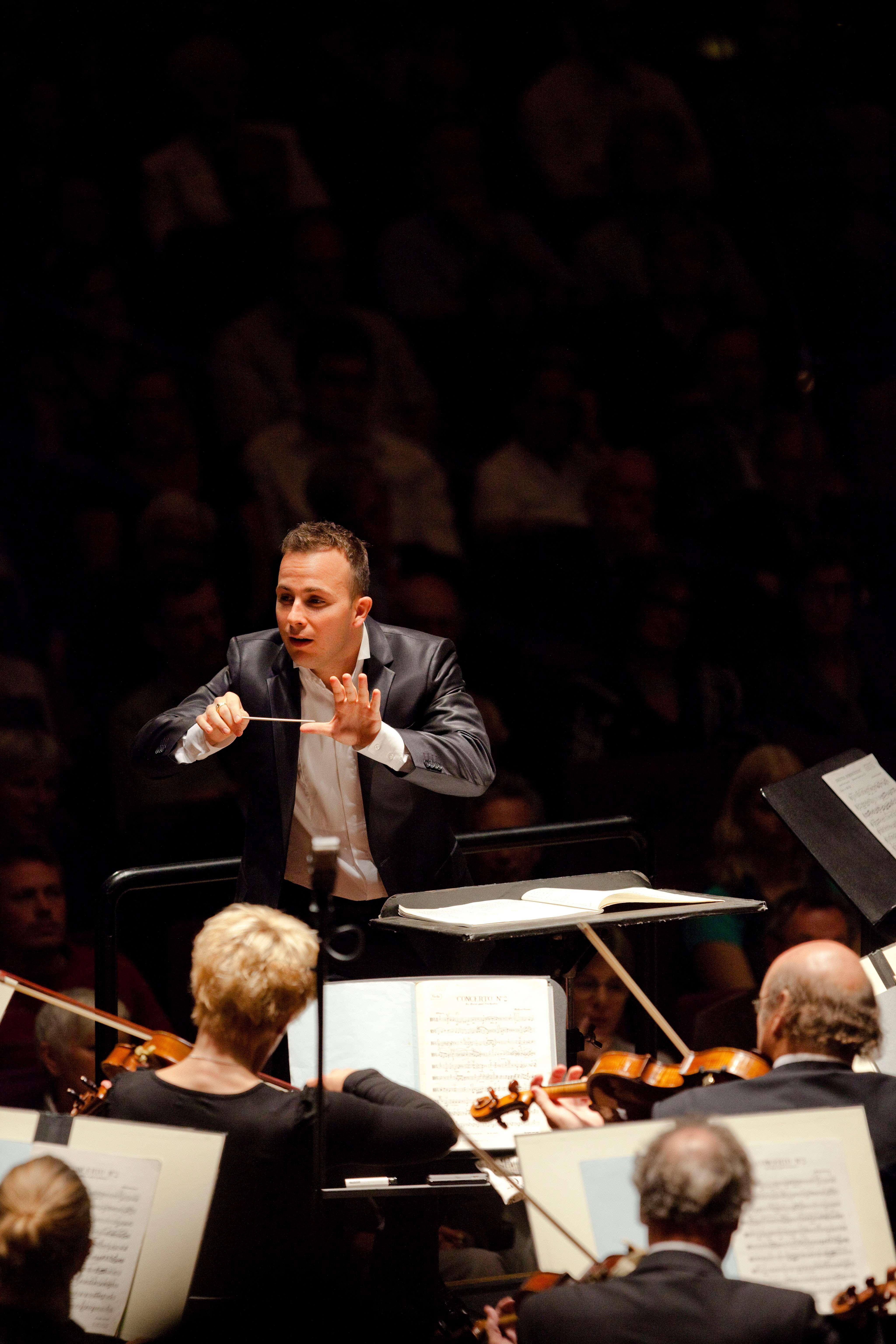|
Back
Brahms Cycle with Yannick Nézet-Séguin (Part I) Montréal
Maison symphonique de Montréal, Place des Arts
06/09/2012 -
Johannes Brahms: Symphonies No. 1 in c minor (Op. 68) and No. 2 in D major (Op. 73)
Orchestre métropolitain, Yannick Nézet-Séguin (Conductor)

Y. Nézet-Séguin (© Marco Borggreve)
Yannick Nézet-Séguin and his hometown Orchestre Métropolitain closed its 2011-12 season in its new home, Maison symphonique de Montréal, with a cycle of the four Brahms symphonies and the violin concerto. Spread over Saturday evening (Nos 1 & 2) and Sunday afternoon (Nos 3 & 4, with the concerto in between) the concerts were a classical music lover’s delight, as we were sealed off from the outdoor cacophonous rumblings of the annual Grand Prix car race, an international popular music festival and confrontations between police and mostly young people protesting against capitalism. What a treat to loose oneself in Brahms!
Yannick Nézet-Séguin doesn’t drop into town as much as he used to, given his international peregrinations. It is therefore more the wonder that he can pull off such a weighty program in less than 24 hours. The orchestra, with about 70 musicians, is smaller than what one may desire for Brahms, but its quality and professionalism are of the highest level.
The first concert began with an exemplary reading of the “tragic” Symphony No. 1. Nézet-Séguin set the perfect tempo (not too fast or too slow) in the opening un poco sostenuto. Dynamics (I followed along with the score) were respected throughout. The timpani, for example, maintained the forte in the opening eight measures with the slight crescendo near the end while returning to the designated forte in the resolving ninth measure. The complicated, often different rhythms between sections of the orchestra were evenly realized, thus contributing to the unified architecture of the work. The solo playing was first rate. Louis-Philippe Marsolais performed the “Alpine” horn theme with golden precision. Nézet-Séguin maintained a tightly-controlled, passionate performance throughout.
Symphony No. 2, the “pastoral”, was not on the same level as the first. It sometimes lacked a sense of continuity, precision and tension. Entries, particularly from the brass, were often tentative and not in unison; some of the strings were not always in tune, and they also lacked warmth. (The later may be expected given the small size of the orchestra; however, this wasn’t the case for the first symphony.) I suspect that it hadn’t been rehearsed as much as the first.
Speaking from the stage, Nézet-Séguin noted that Brahms is his favourite composer and that he had arranged the musicians on stage in the “Viennese” style (cellos switching places with the second violins and the basses placed at the back of the orchestra). This may have contributed to the impeccable balance of the orchestra. Nézet-Séguin conducted both symphonies from memory.
Earl Arthur Love
|